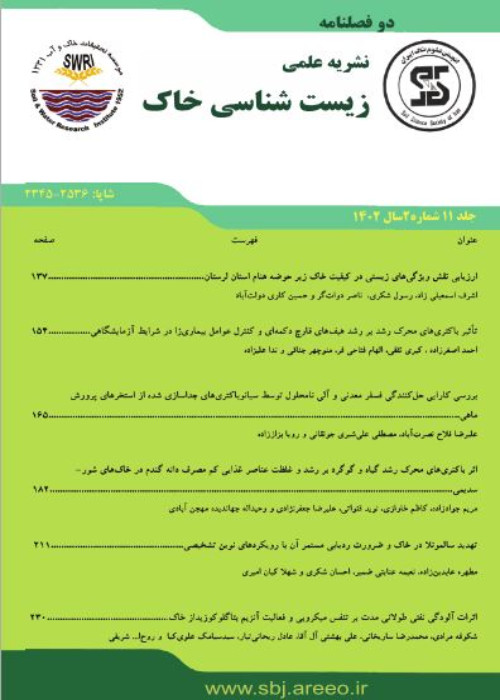Solubilization Mechanisms of Insoluble Phosphates by Phosphate Solubilizing Microorganisms
Phosphorus is one of the most important elements required by plants and it has many different roles, including energy production and transfer, increasing rooting, grain production and improving the quantity and quality of agricultural products. Unfortunately, more than 70% of the phosphorus entering the soil through phosphate fertilizers is stabilized and removed from the accessibility of plants. Therefore, phosphorus stabilization has caused the use of more chemical fertilizers and the amount of total phosphorus in the soil has increased and sometimes the entry of elements along with phosphate fertilizer may cause soil pollution. In order to increase the solubility of insoluble phosphates in the soil or to prevent phosphorus stabilization, environmentally friendly phosphate-solubilizing microorganisms (PSM) such as bacteria, fungi, actinomycetes and algae can be employed. These microorganisms are able to convert insoluble inorganic and organic compounds of phosphorus into soluble compounds by various methods such as production of mineral and organic acids, proton production, and secretion of siderophore, chelation and production of phosphatase enzyme. In mineral soils containing large amounts of calcium, magnesium, iron and aluminum phosphates, the production of mineral and organic acids and in organic soils the phosphatase enzymes are mostly effective. Genes encoding phosphate solubility have been isolated mainly from Erwiniaherbicola, Esherichia coli and Morgonellamorgani. Some of these genes include ushA, agp, cpdB and napA. Despite the existing problems, fortunately, good progress has been made in the field of genetic engineering of phosphate-solubilizing microorganisms so that phosphate-solubilizing genes can be transferred to other bacteria. Due to the fact that soils contain both inorganic and organic compounds, it is recommended to use a microorganism with the ability to dissolve both organic and mineral compounds and a mixture of some microorganisms.
- حق عضویت دریافتی صرف حمایت از نشریات عضو و نگهداری، تکمیل و توسعه مگیران میشود.
- پرداخت حق اشتراک و دانلود مقالات اجازه بازنشر آن در سایر رسانههای چاپی و دیجیتال را به کاربر نمیدهد.


